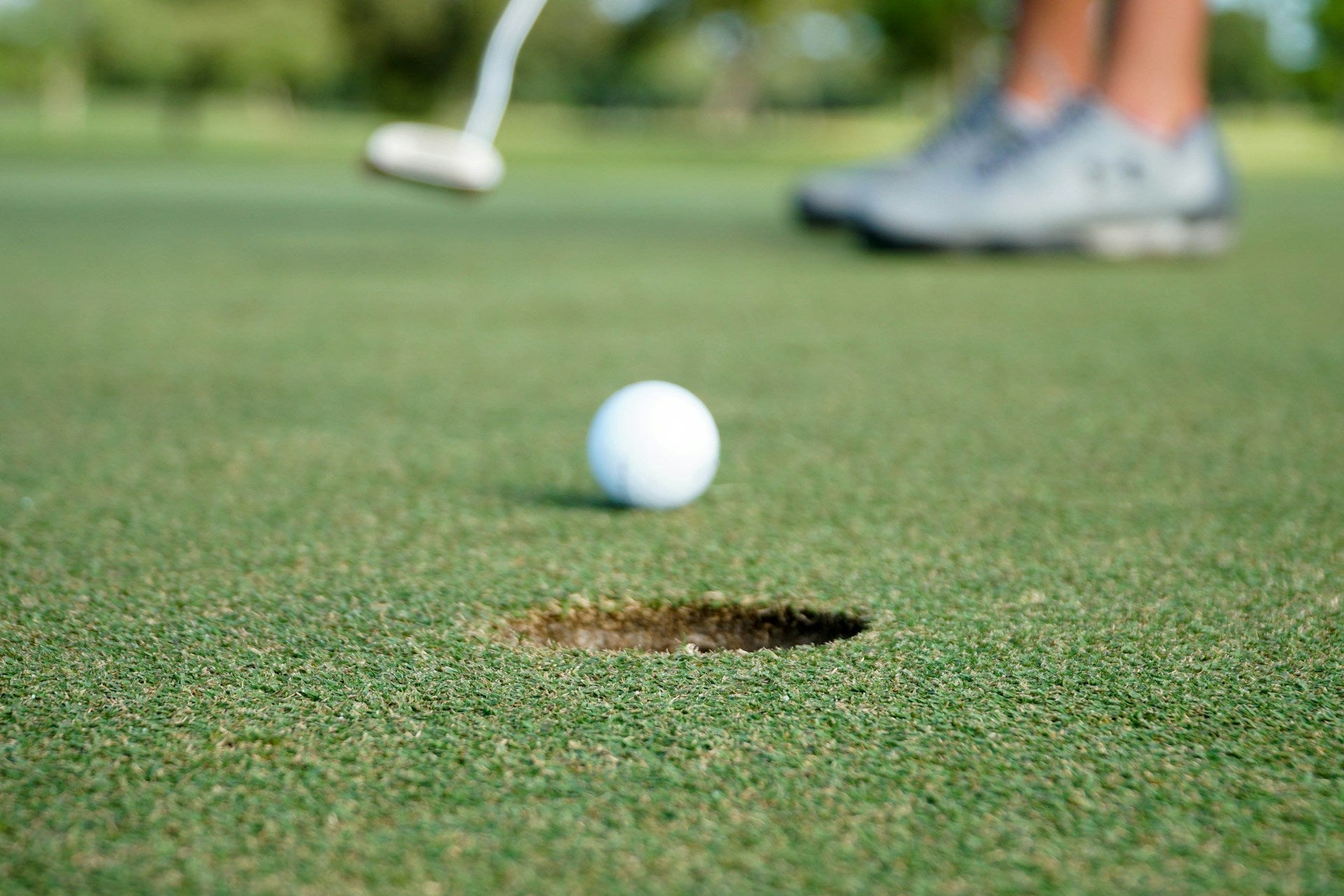Putting practice is a critical component of golf that directly impacts your ability to lower your handicap. Mastering putting skills not only boosts your scoring efficiency but also influences your overall confidence on the golf course.
Putting is a skill that demands precision, control, and continuous practice. Integrating structured putting practice into your overall golf routine is essential to refining your skills. By honing your putting techniques, you position yourself for consistent improvement, translating to lower scores and a more enjoyable game.
The Fundamentals of a Good Putting
Grip
A proper grip forms the foundation of a reliable putting stroke. The key is to maintain a grip that promotes stability and consistency. Avoid using your fingers to grip the putter, and instead, rely on your palms.
This encourages your hands to work together, ensuring a square clubface at impact. Keep pressure light; tense muscles are weak, so allow a natural flow. Experiment with different grip styles to find what suits your natural posture and enhances your putting accuracy.
You may also like to read: Which One is Better: Light Putters or Heavy Putters?
Stance and alignment
Proper stance and alignment are crucial to achieving putting consistency. Your feet should be shoulder-width apart, allowing for a stable base. Aim to keep your body parallel to your intended line.
Often, amateurs aim their bodies at the hole; instead, aim slightly left for right-handed golfers. Using alignment aids, such as lines on the ball, can significantly enhance your accuracy, allowing you to focus on putting with confidence. An accurate stance ensures better control over the distance and direction of each putt.
Read more in Introduction Guide To The Importance Of A Proper Golf Club Grip
Effective Putting Drills
Effective putting drills provide structured methods to enhance your putting abilities. Integrating various drills into your practice routine helps target critical aspects like alignment, distance control, and focus.
Structured drills offer tangible goals, cultivating discipline and measurable improvement. Committing to regular practice regimens is paramount in seeing long-term gains.
Drill 1: alignment and face control
Achieving putting accuracy relies on precise face alignment. Using alignment aids such as lines on your ball can enhance your ability to square the face consistently upon impact. This drill sharpens muscle memory, ensuring your putter face stays square throughout the stroke. Regular practice instills confidence and develops a dependable stroke.
Drill 2: distance control
Distance control is a vital component of effective putting. Incorporating ladder drills into your practice routine will foster better long-range and short-range accuracy. Set out markers at various distances and aim to get the ball within set parameters. These drills simulate real-course conditions, refining your sense of feel and boosting your scoring potential.
Read also: All The Types of Golf Clubs: A Definitive Guide on Clubs
Drill 3: focus without putt holes
Practising without focusing on the hole enhances mental resilience. Utilize tees or small targets to develop acute focus, building confidence in your ability to adjust to different conditions. This method trains you to trust your stroke's mechanics and not overly rely on visual targets, crucial for on-course reliance.
Drill 4: pressure and consistency drills
Emulating on-course pressure during practice prepares golfers for single-attempt scenarios. Set up drills that require precision and maximize pressure, such as must-make putts or single-ball exercises. These enhance consistency under an array of conditions, translating to improved performance during real play.
Improve your golf by enjoying one of these deals of golf training aids!
Advanced Putting Techniques
Advancing in golf demands mastery of sophisticated techniques, particularly green reading and speed control. Mastering these two elements offers a significant edge in lowering scores and improving overall performance.
Understanding green reading
Green reading involves understanding the subtle breaks and slopes that can dramatically influence the direction and speed of a putt. Begin by observing the terrain around the green. Look for indicators such as the direction of grass growth or water drainage patterns that hint at natural contours.
Walk around the hole and visualize the ball's path from different angles to gauge how these breaks affect your putt. Understanding breaks and slopes enables more informed decisions and enhances putting accuracy.
Mastering speed control
Speed control is critical to successful putting and requires precise coordination between strength and touch. Practice drills that incorporate varying distances enhance your ability to judge how much power is needed for each length.
The ladder drill is particularly effective, requiring you to put balls to specific targets without over or under-shooting. Practicing putts of different lengths under diverse conditions refines your touch and increases adaptability.
Read also: What Is The Best Material For A Golf Club?
Practicing Putting at Home
For continuous improvement, integrating putting practice at home is crucial. Utilize resources like indoor putting mats to maintain a routine, particularly during the off-season or when course access is limited. Investing in home practice equipment sustains skill development, ensuring you're ready for optimal performance when you return to the course.
Conclusion
Regular putting practice is essential for lowering your golf scores, contributing to handicap improvement and increased short game efficiency. Consistently integrating structured routines will bolster your putting practice outcomes.
Visit Just Golf Stuff to explore golf equipment that complements your practice drills, and continue to refine your golf putting techniques diligently for sustained success.
 Reviews on
Reviews on 


